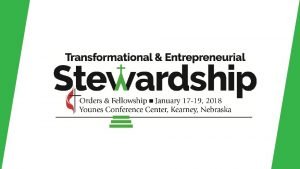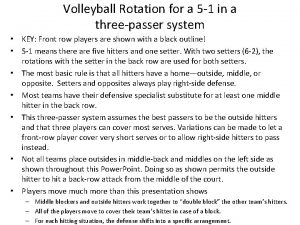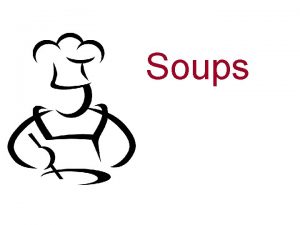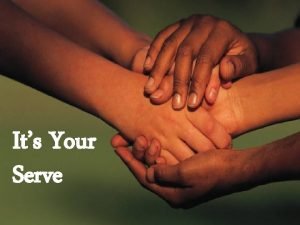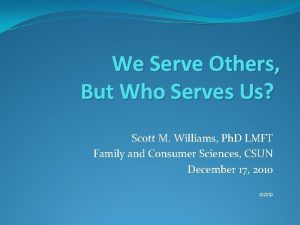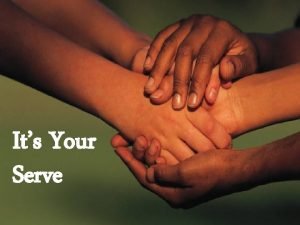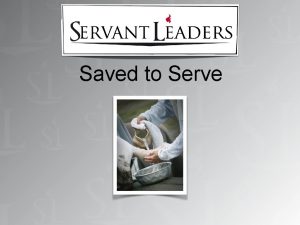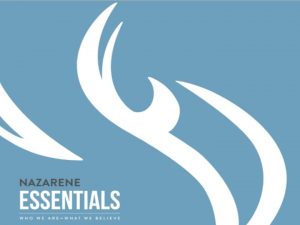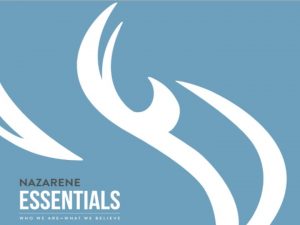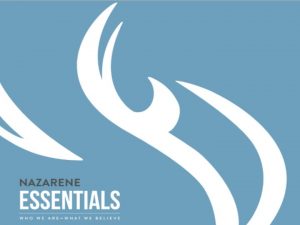Called To Serve Session 2 Called to Serves






















- Slides: 22

Called To Serve Session 2

Called to Serve’s Rationale n We must discuss the issue of abuse if we are going to make you – comfortable – capable, and – confident to handle any situation that comes your way. We need to talk about the help and support you can expect from adults.

Abuse n Many cases of child sexual and physical abuse go unreported. n 1 in 10 boys and 1 in 5 girls experience some form of sexual abuse by the age of 18. n The perpetrators in these cases totally abuse the dignity and rights of children or teens in their care.

Protect and Prevent n It is important to understand how abuse can happen so you can protect yourself and the other teens who trust you. And any children who confide in you. n Knowledge is prevention.

Sexual Abuse n Sexual abuse can refer to any physical contact as well as non-physical acts: – Fondling genitals or private areas of the body – Sexual intercourse with a minor – Sharing pornography – Making a minor watch a sex act – Exposing yourself to a child or teen – Forcing any sexual touching/penetration on another.

Sexual Abuse n All of these behaviors are seriously wrong when done by an adult or an older teen. n What are things to look for? How do you stop abuse from happening?

Signs of Abuse n Predators make inroads with potential victims by pushing boundaries. This is called “grooming”. n Grooming may involve setting up victims with minor acts of flattery, gifts or attention.

Sexual Predators n Predators work to isolate the victims saying “don’t tell” or “this is our secret”. n They may offer alcohol or drugs to lower the defenses of the victim n They try to make the victim feel guilty and afraid to talk about the situation. n They may even threaten to harm the victim’s family or friends.

Victims n They fault. are made to feel that it was their IT IS NOT. Predators prey on the emotions of their victims and take advantage of them. You can model appropriate behavior to the people you are serving.

Appropriate Behaviors n These include modeling appropriate – Touch – Action – Attire – Language – Respect You are reinforcing respect for the boundaries of others as well as yourself.

Reinforcing Proper Behavior n This helps the people you serve to stop inappropriate behavior from others if they should ever experience it. n Your behavior is saying to them: – You are precious – The Church wants you to have a safe, secure environment.

Boundaries n There are three boundaries: – Physical – Emotional – Behavioral Boundaries are personal. Know and respect your boundaries Know and respect the boundaries of others Decide what is “ok” and “not ok”.

Physical Boundaries n. A physical boundary is characterized by an individual’s comfort zone – Who can touch? – How much they can touch? – Where they can touch? If someone is uncomfortable with another’s touch, physical boundaries are violated. Everyone has the right to stop someone from violating their physical boundaries.

Emotional Boundaries n Emotional boundaries are defined by an individual’s – Closeness to another person – Time spent with a person – Desire to share information with another. It can consist of someone pressuring another person to do: something uncomfortable, something they shouldn’t be doing or something wrong.

Emotional Boundaries n Violations may seem subtle or harmless at first. Predators groom victims slowly. n Whenever unsure or uncomfortable about it, STOP.

Behavioral Boundaries n Behavioral boundaries define what a person will do or won’t do—no matter who asks. n No one has the right to pressure you in to doing anything – Against your personal beliefs – Against your beliefs of right and wrong. If it happens, say “NO”, and tell a trusted adult.

Discussion n Cases will be provided

Benefits By stopping the boundary breaker as soon as you are uncomfortable, you reduce the possibility of more difficult circumstances occurring later. n Whenever you are uncertain if a boundary has been broken, n – – STOP STEP BACK EVALUATE THEN REPORT IT TO A TRUSTED ADULT

When a Boundary Is Violated n There are three choices: – Speak directly to the person (Please stop) – Go to a supervisor; have them talk to the individual – Do nothing and put up with the consequences The DANGER is -time won’t fix the problem -you will begin to accept having your boundaries violated

Your Service n You are in a position to educate others in respect for their physical, emotional, and behavioral boundaries. n You can model appropriate respect for other people’s boundaries. n You may be able to help someone who is facing the violation of the boundaries.

Remember n It is never an easy thing to tell, but it must be done to protect yourself or another person. n The abused person has done nothing wrong and has the right to escape the situation. n Tell a trusted adult: parent, teacher, youth minister, or the police.

Remember n If you suspect abuse, you can call the Department of Social Services hotline at 800 -942 -4357. n Everyone has the right to be safe and secure.
 Praise the source of faith and learning lyrics
Praise the source of faith and learning lyrics Exercise 38 review sheet art-labeling activity 1 (2 of 2)
Exercise 38 review sheet art-labeling activity 1 (2 of 2) A pizzeria serves two round pizzas of the same thickness
A pizzeria serves two round pizzas of the same thickness What are lines sections elevations and guidelines
What are lines sections elevations and guidelines Which part of the neuron serves as the protective coating?
Which part of the neuron serves as the protective coating? Dating serves several important functions that include:
Dating serves several important functions that include: Use of varnish is contraindicated under
Use of varnish is contraindicated under Dating serves several important functions that include
Dating serves several important functions that include This serves as the meat of the paragraph
This serves as the meat of the paragraph He serves in a restaurant
He serves in a restaurant Respiration
Respiration A mechanism that spins, reads, and writes disks.
A mechanism that spins, reads, and writes disks. Volleyball rotations 5-1
Volleyball rotations 5-1 Obj dating
Obj dating Bureta para que serve
Bureta para que serve We serve a risen savior
We serve a risen savior Soup riddle
Soup riddle Lions we serve
Lions we serve We serve to save
We serve to save Samurai to serve
Samurai to serve Gantt chart fcfs
Gantt chart fcfs Ivan allen jr accomplishments
Ivan allen jr accomplishments Quickserve cummins.com
Quickserve cummins.com
